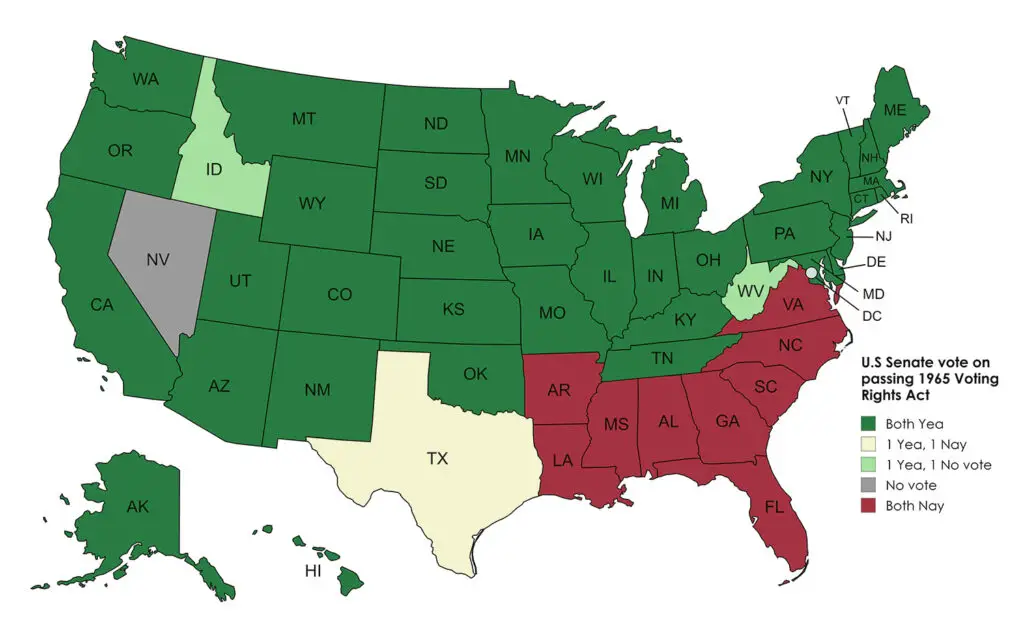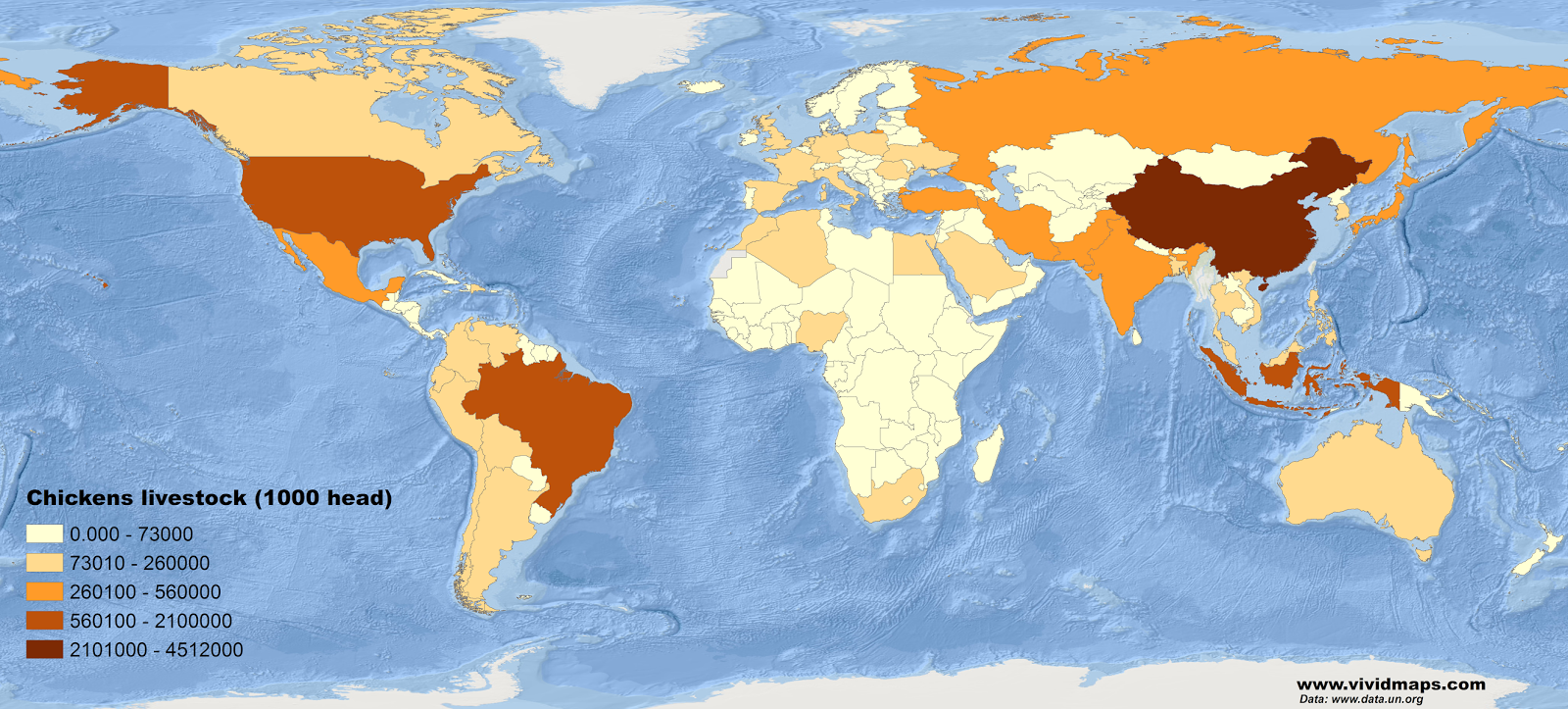Historic U.S. Senate Vote on the 1965 Voting Rights Act
A fascinating map of the United States recently shared by Reddit user NikaNExitedBFF illustrates one of the most pivotal moments in American civil rights history: the Senate vote on the 1965 Voting Rights Act. This visualization tells a compelling story of regional divides and the complex political landscape of mid-1960s America.

Breaking Down the Vote
The map uses a simple but effective color scheme to show how each state’s senators voted:
- Green states indicate both senators voted in favor
- Red states show where both senators opposed the act
- Yellow (Texas) represents a split vote
- Light green (Idaho and West Virginia) shows states where one senator voted in favor while the other didn’t vote
- Gray marks state with no votes recorded
The Southern Block
Perhaps the most striking feature is the solid block of red states across the South. Alabama, Arkansas, Georgia, Louisiana, Mississippi, South Carolina, and Virginia – all voted against the landmark legislation. This voting pattern reflected the region’s strong opposition to federal intervention in state voting practices.
Beyond Regional Lines
While the South’s opposition was unified, the map reveals interesting outliers. Texas broke from its southern neighbors with a split vote, while border states like Kentucky and Tennessee supported the act. This nuanced voting pattern helps us understand the complexity of civil rights politics beyond simple North-South divisions.
Historical Context
The Voting Rights Act of 1965 passed the Senate with a vote of 77-19, despite fierce opposition. President Lyndon B. Johnson signed it into law on August 6, 1965, marking a watershed moment in American civil rights history. The act eliminated discriminatory voting practices, including literacy tests and poll taxes, that had effectively disenfranchised many African American voters since the Reconstruction era.
Impact and Legacy
The act’s passage led to immediate and dramatic increases in African American voter registration. In Mississippi, Black voter registration increased from just 6.7% in 1965 to 59.8% in 1967. Similar increases occurred across the South, fundamentally changing the political landscape of America.
Further Exploration
For those interested in learning more about this pivotal moment in American history, here are some valuable resources available on Amazon:
- “Give Us the Ballot: The Modern Struggle for Voting Rights in America” by Ari Berman – A comprehensive examination of the Voting Rights Act and its lasting impact on American democracy.
- “The Voting Rights War: The NAACP and the Ongoing Struggle for Justice” by Gloria J. Browne-Marshall – Chronicles the fight for voting rights through the lens of the NAACP’s legal battles.
- “Bending Toward Justice: The Voting Rights Act and the Transformation of American Democracy” by Gary May – Provides a detailed historical context of the act’s passage and implementation.








